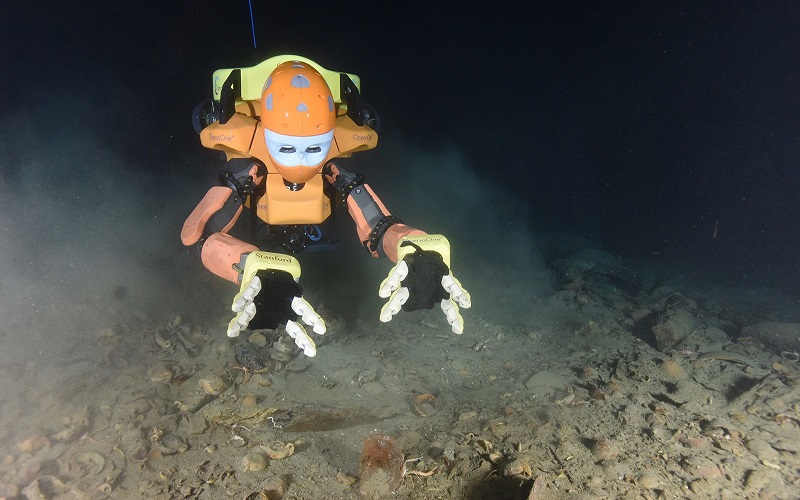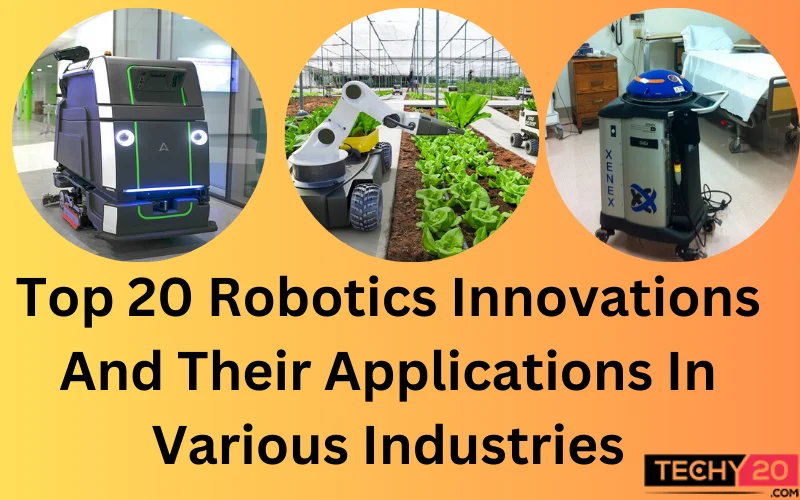Robotics has revolutionized industries across the globe, introducing innovative solutions to everyday challenges. From healthcare to agriculture and logistics, robots have become essential tools, enhancing efficiency, safety, and precision in various sectors. In this article, we will explore the top 20 robotics innovations and their applications in diverse industries, shedding light on how these cutting-edge technologies are reshaping the future of work and human-robot interactions.
1. Asus Zenbo
Asus Zenbo is an affordable robot with autonomous mobility and speech recognition. It helps users remember daily tasks like exercise, medication, and appointments. Additionally, Zenbo monitors surroundings for emergencies and connects to smart-home components, including cameras, lights, and door locks.
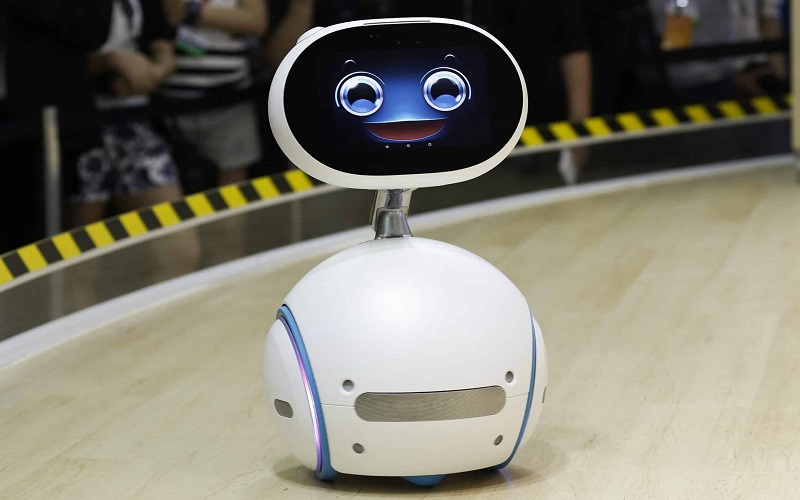
2. Hadrian X
The Hadrian X is an advanced building robot developed by Fastbrick Robotics in Australia. It performs brick loading, chopping, routing, and installation with remarkable precision. Leveraging FBR’s dynamic stabilization technology, it possesses the ability to adapt in real-time to varying ambient variables, enabling seamless execution of large-scale outdoor tasks.
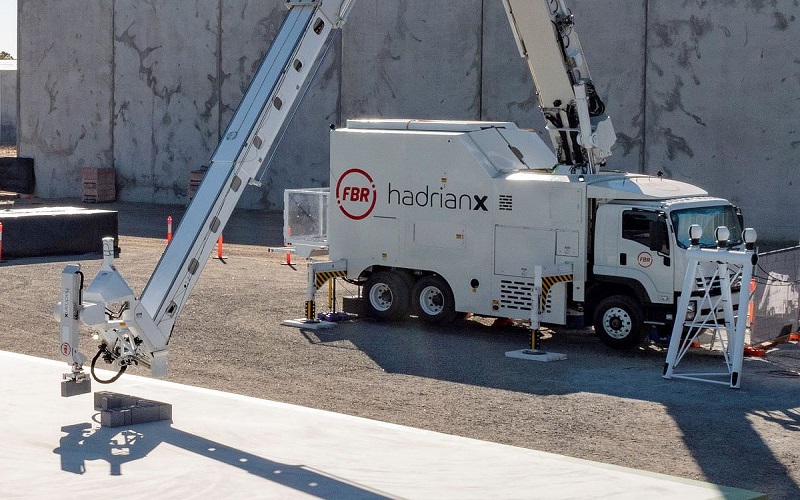
3. Security And Defense Robots
Security and defense robots, including military drones, play a vital role in soldier safety and reconnaissance missions. Operating in dynamic, hostile areas, these robots require high mobility, autonomy, and adaptability. Innovations like Boston Dynamics’ Big Dog and edge AI chips have enhanced their capabilities, allowing autonomous navigation through unmapped terrains.
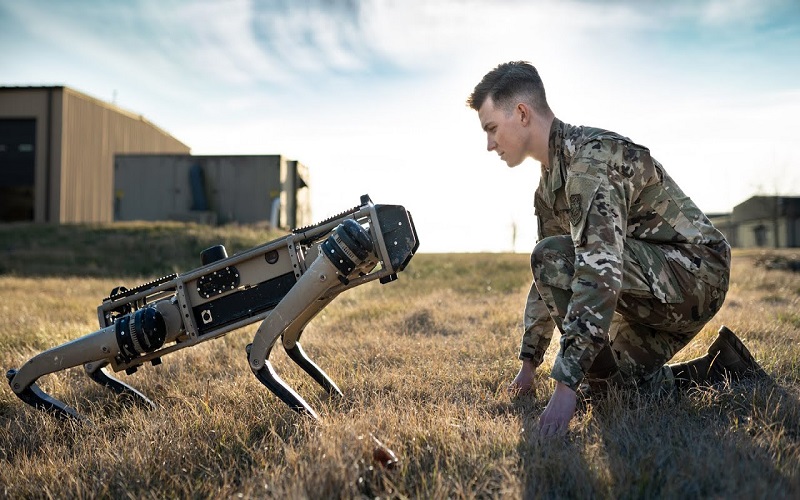
4. Saul Robot
The Saul Robot, developed by Xenex, is a remarkable innovation designed to combat deadly diseases like the Ebola virus. This robot employs powerful pulses of highly energetic ultraviolet rays to eradicate the virus in rooms where quarantine procedures are conducted on aid workers. By breaking down and weakening the virus’s cell walls, Saul plays a crucial role in ensuring the safety of relief workers and containing the spread of infections effectively.
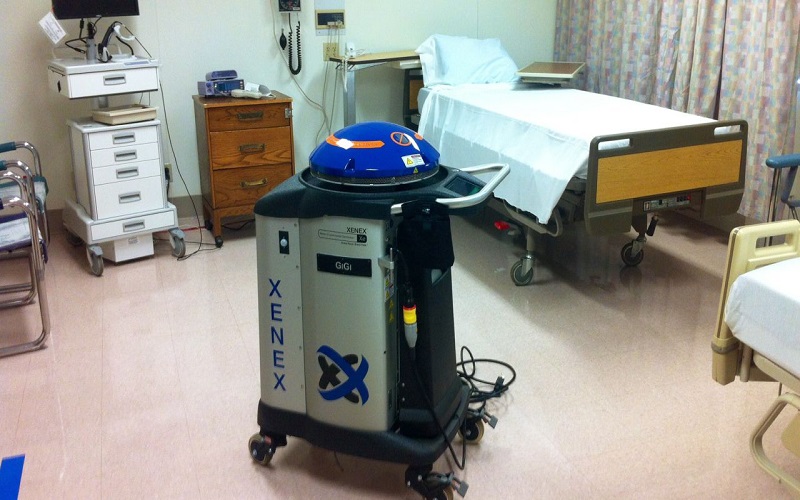
5. Pepper
Pepper, the talking humanoid robot by SoftBank Robotics, adapts its behavior to the emotional states of those around it. Equipped with multi-directional sensors, Pepper detects emotions like joy, sadness, surprise, and anger, responding appropriately. Utilizing lexical field analysis and advanced cameras, Pepper understands emotional context and recognizes object shapes. With up to 20 embedded engines, it exhibits sophisticated movements, making it an empathetic and intelligent companion.

6. Cleaning And Hygiene Robots
Industrial cleaning robots offer a solution for repetitive cleaning tasks in industrial facilities, ensuring product quality and worker safety. These robots can autonomously navigate through the space, avoiding obstacles and people using internal maps and sensors. Some are designed for wet cleaning with wax application, while others use brushes to collect debris.
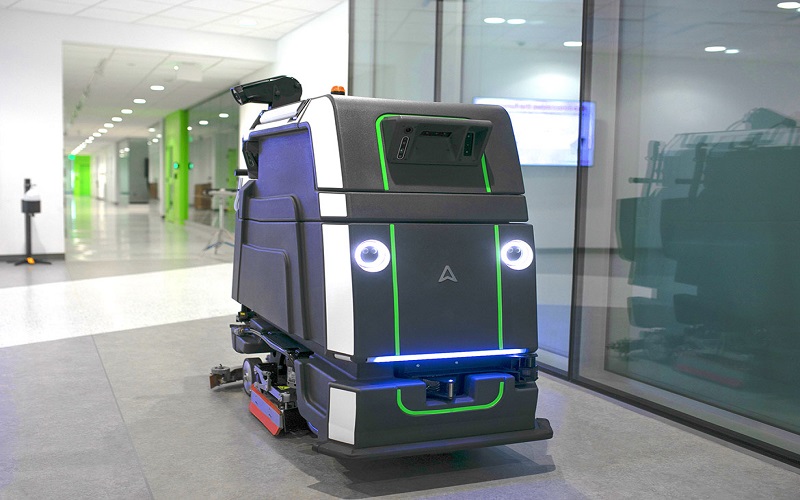
7. Nanoscale Robots
Nanoscale robots, inspired by origami concepts using DNA strands, can self-assemble and transport nanoparticles. By following a few basic rules, the DNA origami structures fold into nanostructures. These robots can be controlled at precise nanoscale movements under an applied electric field, allowing for self-assembly and precise transportation of nanoparticles or molecules over tens of nanometers or more.
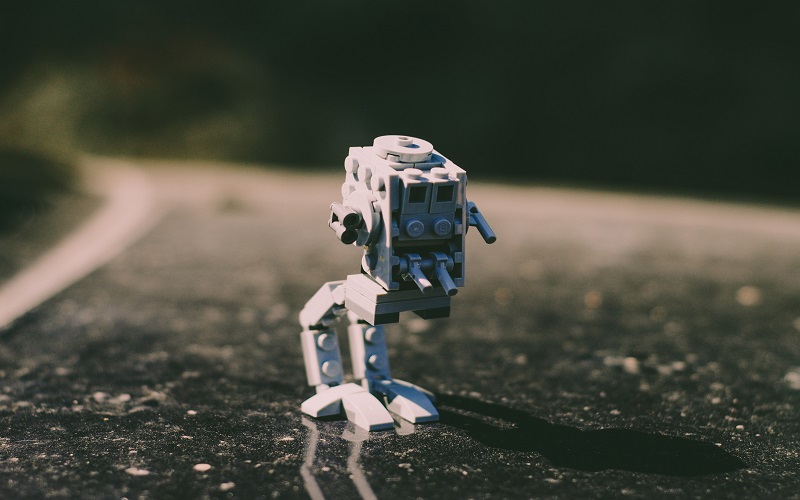
8. Inspection And Quality Control Robots
Quality control is essential, as faulty parts can be life-threatening. Robotic inspection, unlike human examination, ensures 100% accuracy. Vision Robots, combined with six-axis robotic arms, inspect parts from multiple angles, examining cracks, dimensions, and coating uniformity. Inspection robots are versatile, used for pipeline inspection in the oil and gas industry, aerial drones inspecting rooftops, and more. Some robots use End of Arm Tooling for measurements and electrical resistance assessments.
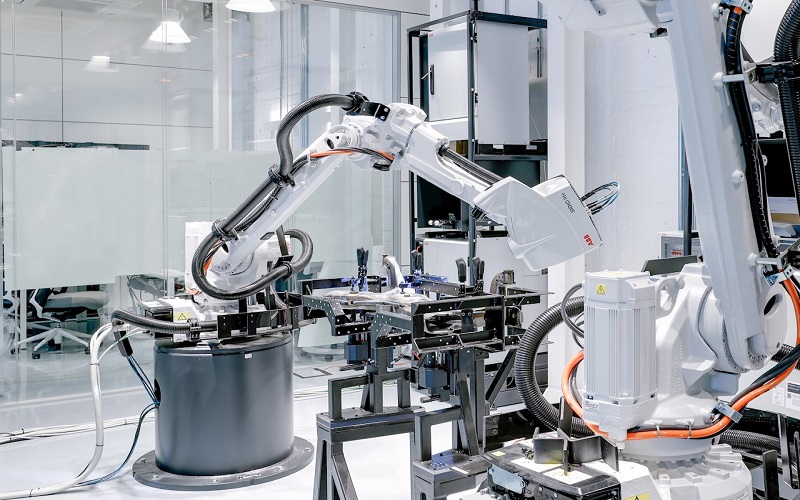
9. Paro
Dr. Takanori Shibata created Paro, a therapeutic robot resembling a baby harp seal, controlled by artificial intelligence. Paro’s behavior adapts to various sensors monitoring light, sound, temperature, and touch. This furry robot aims to reduce stress and promote communication between caregivers and patients. With its five sensors for posture, light, tactile, audition, and temperature, Paro has proven effective in relaxing and motivating patients, drawing from the benefits of animal therapy.
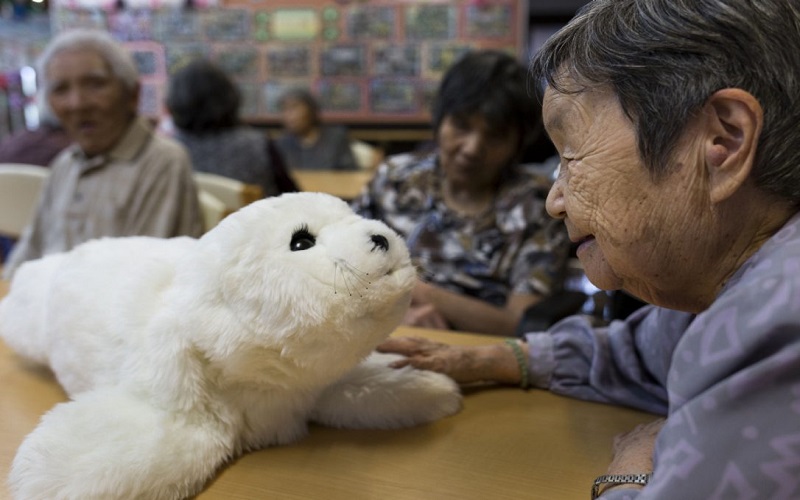
10. Painting And Coating Robots
Industrial painting and coating involve applying paint or coatings to workpieces, often with repetitive procedures. This makes them ideal tasks for robotic automation. Painting robots are faster and deliver consistent results, while coating robots offer precise control, ensuring consistency, accuracy, and speed compared to manual processes. Robotic painting finds applications in construction and automotive manufacturing, while coating robots handle various industrial processes with different types of coatings, offering unique properties such as electrical resistance or non-stick surfaces.
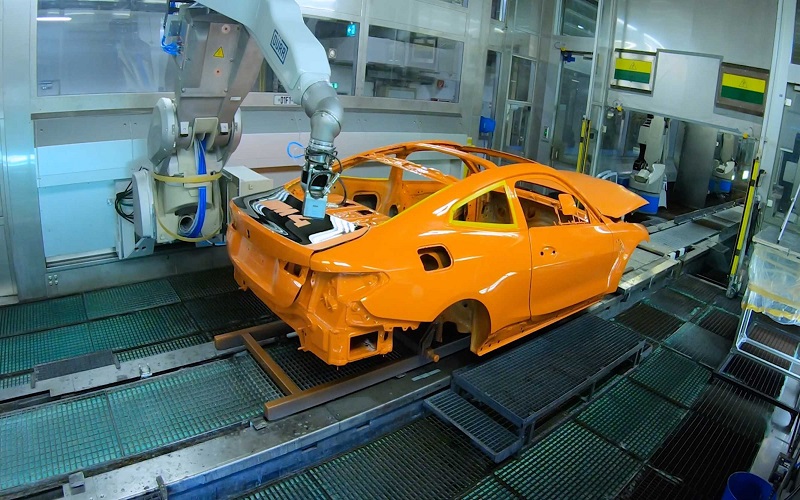
11. Wearable Robots
Wearable robotic suits are a game-changer for workers involved in cargo loading or long hours on their feet. These lightweight, stretchy exosuits integrate robotic control, fabric design, sensors, and muscular aid to enhance balance, strength, and endurance. The applications are vast, ranging from rehabilitating individuals with movement disorders like multiple sclerosis or stroke to supporting the elderly in improving muscular strength and mobility. The suits offer personalized control over physical enhancements, making them a sophisticated and beneficial application of robotics.
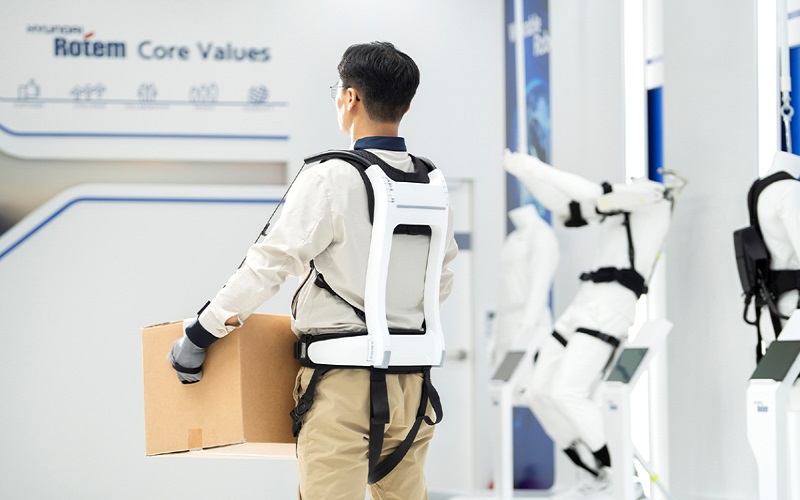
12. Medical Robots
Medical robots make up 30% of professional service robots sales, generating a market worth US$3.7 billion. Surgical robots like Medrobotics Flex and Johnson & Johnson’s Auris offer precise access to challenging anatomical areas and reduce surgeon fatigue. Improving haptic feedback with miniaturized actuators enhances accuracy while researchers explore tactile sensors for measuring tissue texture and topography, advancing surgical technology.
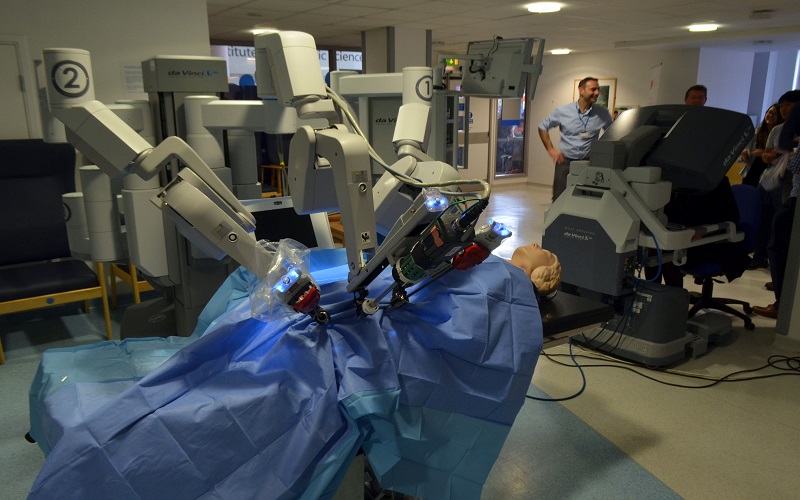
13. Handling And Picking Robots
Handling and picking robots play a crucial role in warehouses, transporting goods and fulfilling orders efficiently. With the booming e-commerce industry, the demand for these robots has significantly increased. Material handling robots, Pick and Place robots, and Order Picking Robots fall under the category of autonomous mobile robots (AMRs), streamlining warehouse operations and enhancing productivity.
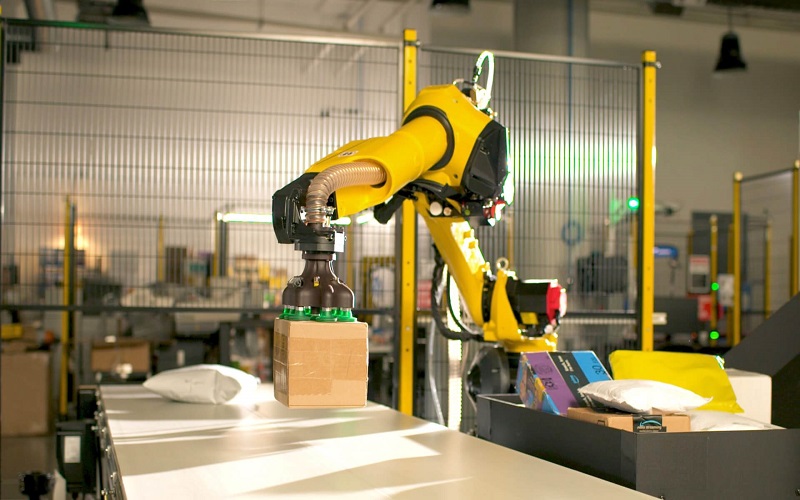
14. Logistics And Storage Robots
Robots in warehouses and distribution centers can automate various tasks, such as order picking, packing, sorting, labeling, and transportation. While over 80% of warehouses did not use automation or robotics in 2021, the trend is changing rapidly. Automated Guided Vehicles (AGVs) and Autonomous Mobile Robots (AMRs) are the fastest-growing categories, revolutionizing goods transportation within these facilities. Additionally, delivery robots, resembling wheeled carts or humanoid forms, are making strides in urban meal distribution.
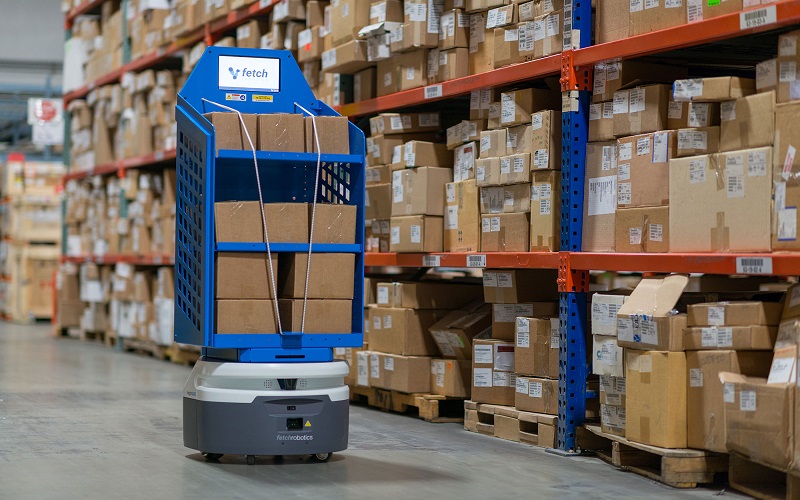
15. Delivery Robots
Delivery robots come in various shapes and sizes, each serving different functions. Some look like carts with wheels, delivering food in cities, while others resemble humans with two legs and arms, equipped with sensors in a dome-shaped head. There are also flying UAV delivery robots and four-legged robots similar to dogs. These robots offer numerous advantages, including faster delivery, cost-effectiveness, and reliability. Additionally, efficient last-mile courier services, like Amazon’s scout, are becoming crucial for businesses to stay competitive.
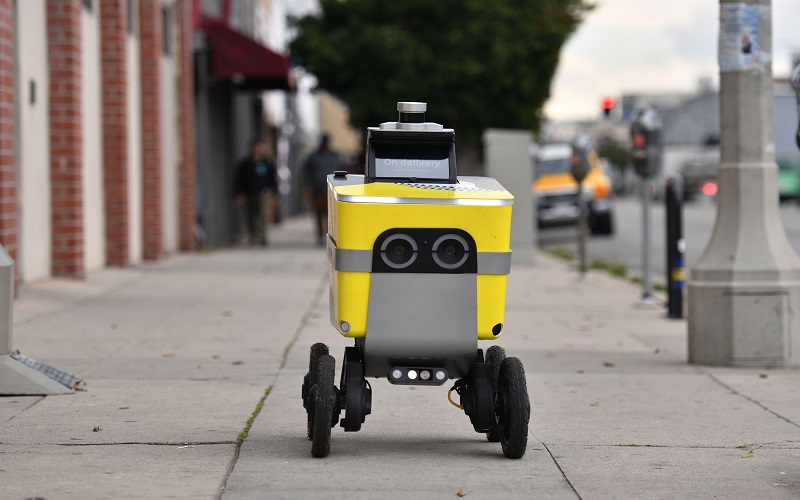
16. Robotic Vacuum Cleaner
Robot vacuum cleaners are advanced floor cleaning devices, programmable and self-cleaning, offering convenience and ease of use. Unlike conventional vacuum cleaners, they can be stored under furniture, saving space. The Roomba iRobot stands out as one of the most intelligent and efficient robot vacuum cleaners.
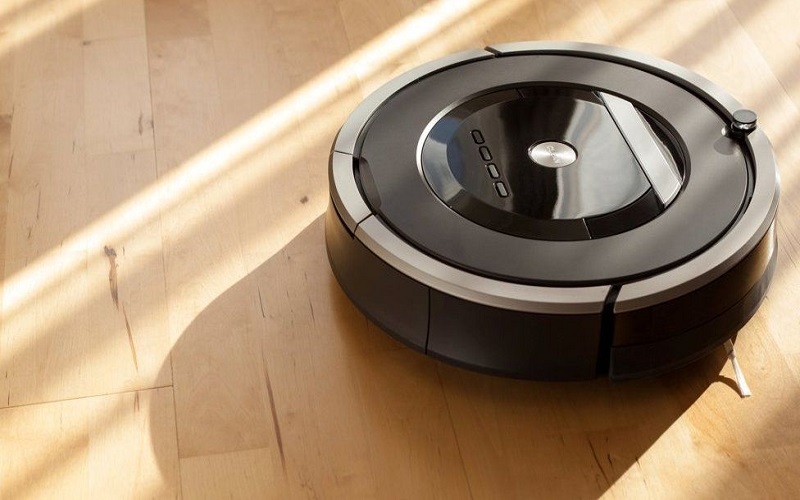
17. Google’s Worker Robots
Google aims to develop worker robots with personalities, as per their recently granted patent. These robots will be capable of downloading personalities from a cloud-based system and displaying multiple personalities while interacting with humans. This project ambitious highlights Google’s commitment to advancing the field of robotics.
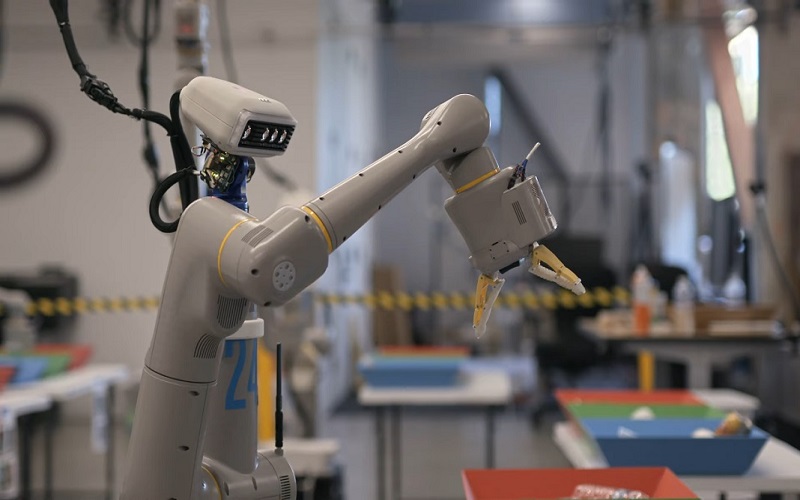
18. Harvesting Robots
Harvesting robots are revolutionizing agriculture with their soft grippers, ensuring gentle handling of delicate crops. Equipped with specialized vision systems, they can determine ripeness accurately. These robots not only ease back-breaking and uncomfortable labor but also enhance process efficiency while cutting down on labor costs. Their presence marks a significant advancement in agricultural robotics.
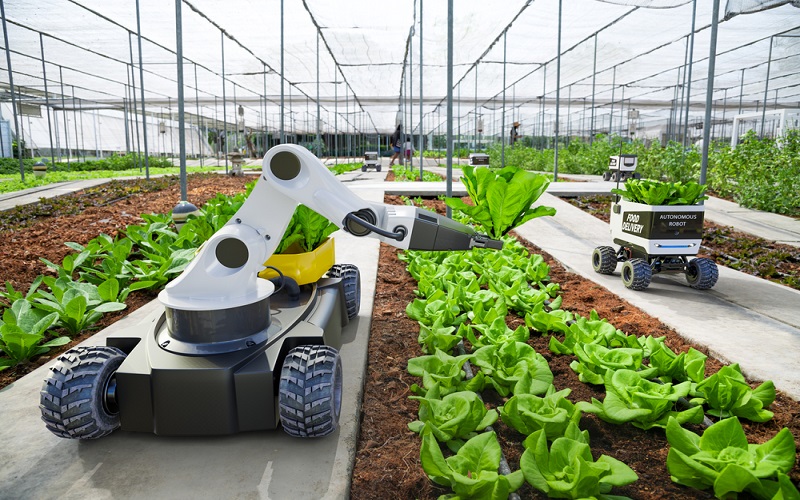
19. Disinfection Robots
Commercially available autonomous mobile robots offer an efficient solution for surface disinfection. Navigating hallways safely, these robots are equipped to avoid collisions with people and other objects. Some use a robotic arm with cleaning fluid for physical contact with surfaces, while others utilize UV radiation to disinfect exposed areas. These cleaning robots mark a significant advancement in ensuring cleanliness and hygiene in various settings.
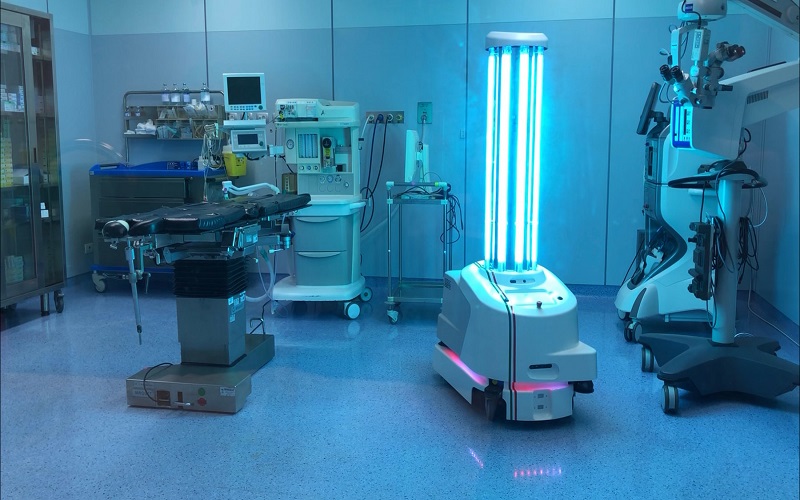
20. Ocean Robot
The ocean holds great importance for our existence, yet its depths remain a mystery. Thanks to high-tech ocean robots, we now have the means to explore and uncover its hidden secrets. Eelume, a Norwegian company, introduces the Eelume EELY500, a remarkable marine robot specifically designed for underwater inspection and repair in industrial environments. This cutting-edge robot opens new possibilities for exploring and maintaining the ocean’s vast and diverse ecosystems.
